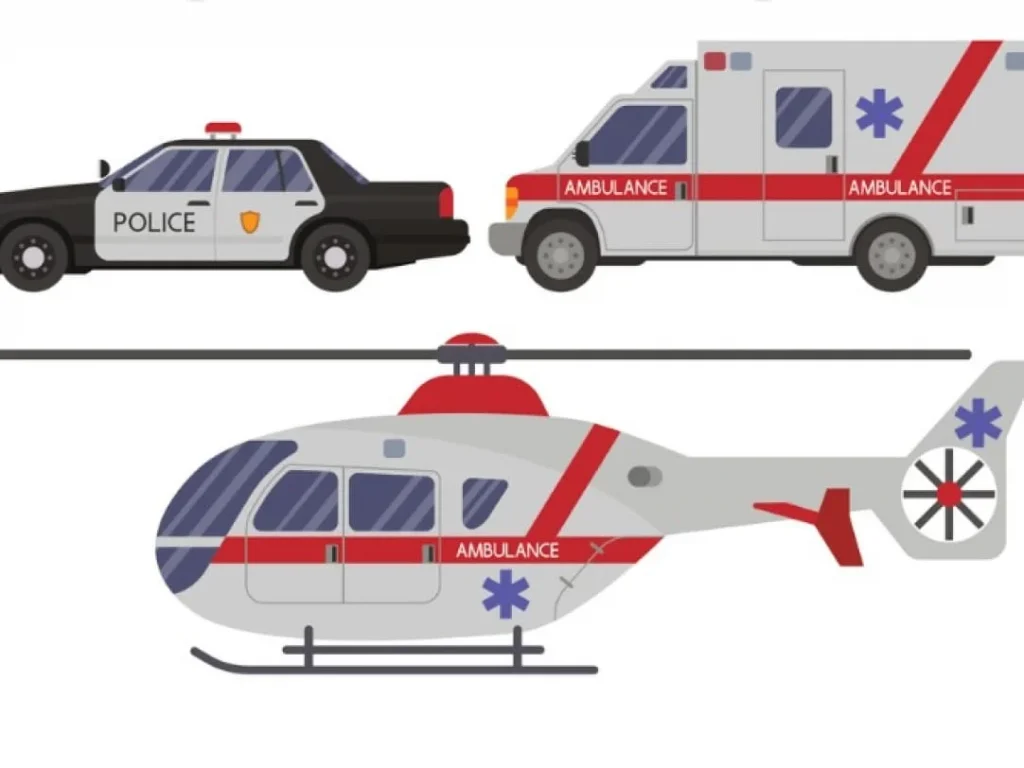Air Ambulance VS Ground Ambulance: Which One’s the Better Option?
The importance of prompt emergency services can only be gauged during the time of a traumatic incident. It isn’t a question of which of the emergency transport is better, an air ambulance or a ground ambulance, rather the question is which one is more efficient and can reduce mortality rates. The golden hour is crucial. Those first sixty minutes that follow a trauma determine the state of the individual in danger. Not only the current state but also the condition of the patient in the future. One minute is lost and the patient could get stuck in the sinking sand of lifelong medical impairment, if not death. That is how critical those passing sixty minutes are.
So be it any form of emergency medical transportation, the response and transfer times are the most important factors to consider. But in different medical circumstances, the choice to be made can depend on several other factors as well. Let us look into some of these in this blog, a complete overview of what a ground ambulance and an air ambulance can be and how you can determine which one to choose during an emergency.
Types of Air and Ground Ambulances:
An air ambulance can be of various types and the same applies to ground ambulances.
- Air ambulances are mainly of two types; helicopter ambulance and fixed wing ambulance which is an airplane.
- Helicopter ambulance is usually used for shorter distances, and inter-hospital transfers whereas fixed-wing ambulance is used for longer distances and critical treatment on board. A fixed-wing air ambulance can be more stable and so it is preferred for better patient care. Private ambulance services also offer specialized air ambulances like the ones specifically to cater to ill newborns or infants, for cardiac patients.
- Similarly, ground ambulances are also mainly of two types basic life support ambulances and advanced life support ambulances.
- In these ground ambulances, there are also different specialized ambulances like cardiac/ALS ambulances, neonatal ambulances, hearse ambulances, pet ambulances, etc. Ambulance service providers also offer bike ambulance services, train ambulance services, etc.
Benefits and Limitations of an Air Ambulance
- The greatest advantage of air ambulances is the response time. An aircraft or a helicopter is the fastest mode of transport and so they are extremely beneficial when it comes to emergencies to reduce time and help in fast patient transfer over longer distances. Along with helping in fast transfers, air ambulances can also reach those geographical locations that might be difficult for a ground ambulance to reach. Air ambulance staff are well-experienced, trained medical experts who can offer specialized and critical care to the patient. Overall, private ambulance services that offer air ambulances are a versatile mode of emergency medical transport as they can cover different kinds of medical cases and traumas.
- With many advantages, air ambulances may seem like the best option to choose. But even this comes with some limitations that are to be considered. Air ambulances, though fast and advanced, can come with a cost limitation, meaning that they are very expensive. Although there is an option for insurance coverage, it can still be expensive. There could be meteorological constraints that could hamper the aircraft’s ability to transfer patients safely. Occasionally, communication problems can occur leading to limited information transfer and coordination between various people. In short, air ambulance service may not always be feasible.
Benefits and Limitations of a Ground Ambulance
- Ground ambulances have greater availability, i.e., in rural areas and urban areas alike for any kind of medical emergencies. As compared to air ambulances, ground ambulances are much cheaper and the best for shorter distances. Air travel can bring in another set of complications, like altitude problems that can cause problems in some kind of medical condition.
- Ground ambulances have limitations like slower response time due to traffic congestion, bad weather conditions, or in some remote areas where roads aren’t proper, like the mountainous regions. For longer routes outside a country and even within one, ground ambulances are not a good option. Even during an unseen mass emergency, trauma cases can be handled better using an air ambulance rather than a ground ambulance.
In conclusion, different types of ambulances come with their own set of benefits and drawbacks. While considering transport for your medical emergency, all of these different factors should be considered, and making a choice is easy! Just choose the most feasible option for yourself and make sure you’re depending on good ambulance service providers.
